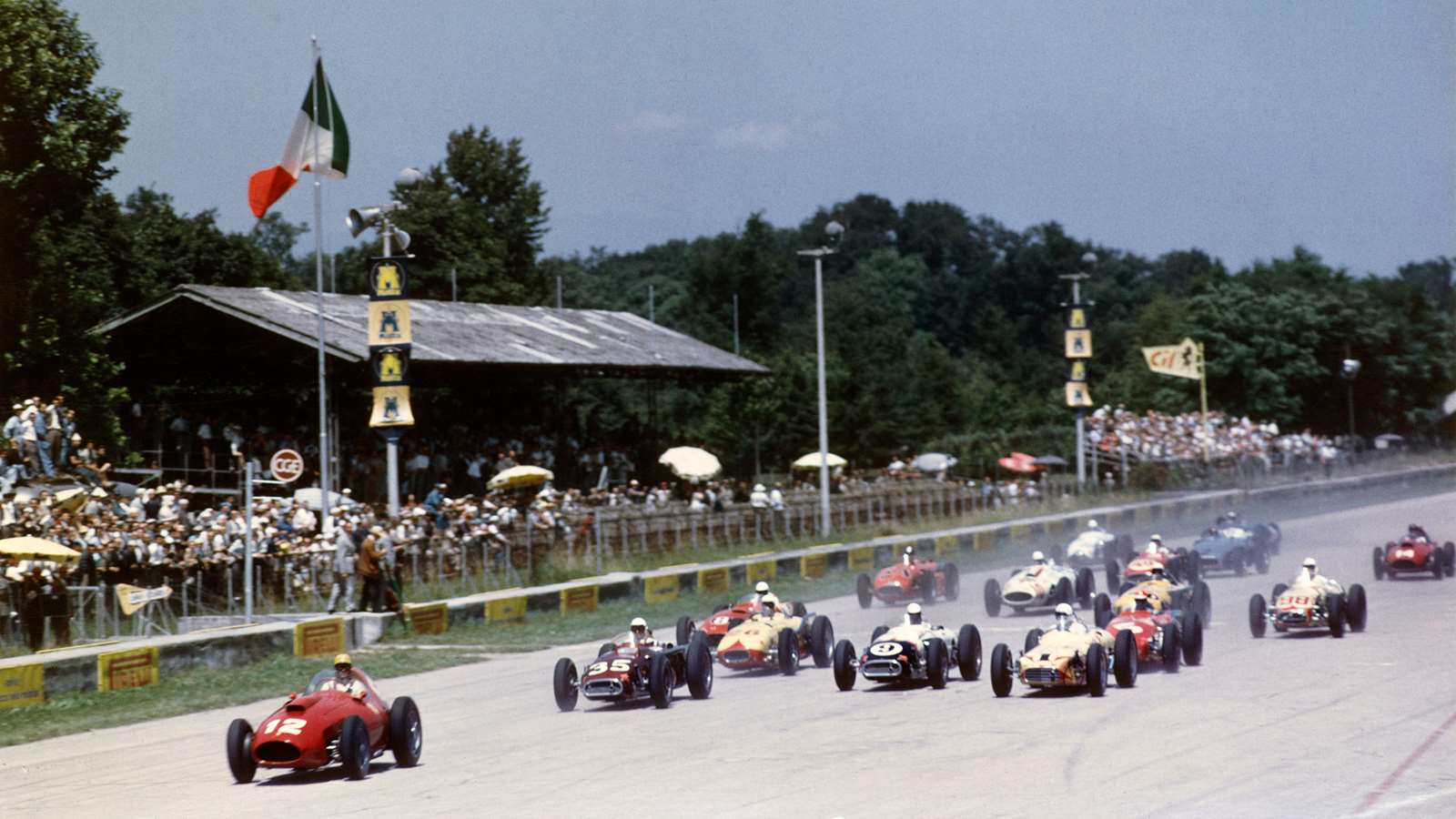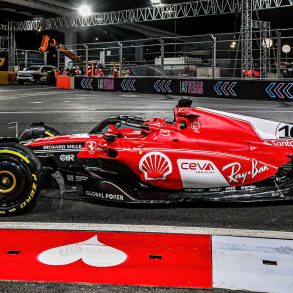500 Miglia di Monza – The Race of Two Worlds
By Dennis David
In 1954, redevelopment of the Autodromo Nazionale Monza included rebuilding the oval portion of the track which had been abandoned during World War II took place. Monza the oldest continuous Formula 1 venue’s rebuilt banking was now much steeper and also unfortunately bumpier. In 1956, Giuseppe Bacciagaluppi, then president of the Automobile Club of Milan and chairman of the Autodromo Nazionale Monza, invited Duane Carter, competition director of the United States Automobile Club (USAC), to attend the second running of the Italian Grand Prix on the freshly rebuilt circuit. Bacciagaluppi and Carter believed that an oval race held in Europe instead of the United States would be popular and could attract the top Formula One and USAC teams to an international competition.
Bacciagaluppi convinced the Automobile Club of Italy to begin work on making such an event possible. The American race cars and equipment along with a contingent of mechanics to the event traveled from Indianapolis to New York City, from where they were shipped to Genoa, Italy and trucked to Monza, while the rest of the team personnel and drivers would fly to the race.

The Americans at home on banking sometimes much worse than this were ready. The Firestone Tire and Rubber Company had transported a USAC Kurtis Kraft–Chrysler to Monza in April in order to conduct tests on the tires that would be supplied for the event. American driver Pat O’Connor completed 364 km (226 mi) on the oval, setting a best lap speed of 273 km/h (170 mph), nearly 48 km/h (30 mph) faster than the lap speeds reached at Indianapolis. In the end the only opposition to the Americans came from a trio of Ecurie Ecosse Jaguars fresh from their LeMans triumph where they finished 1st and 2nd just the weekend before.
The Americans showed their experience and the fact that their cars were meant for this type of race took the first three places with Jimmy Bryan taking the victory and the prize of $26,801, an enormous amount of money for a European event. The next year the European teams determined to stop the Americans from winning this prize in their own back yard were out in force. Ferrari had three cars while Maserati had a special Indy-type racer built for Stirling Moss called the Eldorado Special after its sponsor Eldorado ice cream. Fangio was driving with the Americans in the previous year’s winner.
Musso in the lead Ferrari qualified for pole position and was followed by two American entries including Fangio’s Dean Van Lines Special in third position. The event which was divided into three heats saw Musso leading the Americans Eddie Sachs, Jim Rathmann and Bryan. Sachs engine blew up while Musso had to pit, overwhelmed by the methanol fumes that were being used for the first time in many years but common in the United States. This would prove to be the Achilles’ heel for the Europeans as many of their drives succumbed to the noxious fumes.














